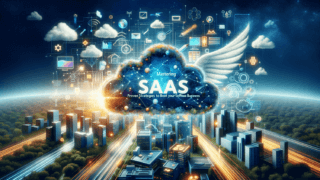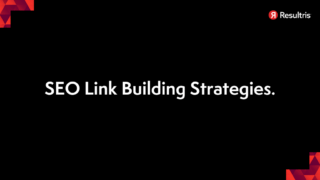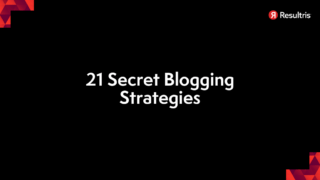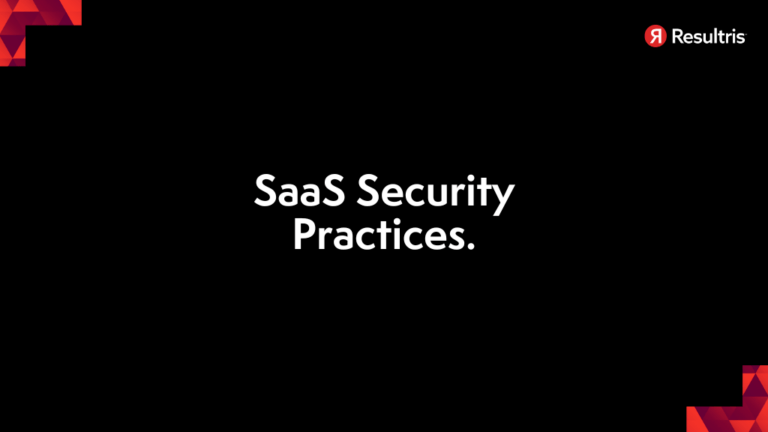
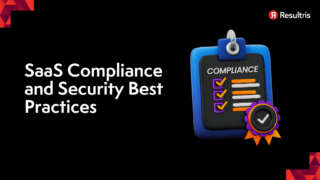
Written by: Tim Eisenhauer
Last updated:

We’re all searching for that silver bullet to keep our data safe. We can’t afford to let our guard down, especially when it comes to Software as a Service (SaaS) applications. But don’t worry, we’ve got your back!
As we navigate the digital age, understanding how SaaS and its security impacts us is critical. There are key security measures we need to keep our data safe.
SaaS, or Software as a Service, essentially means software that’s available online only. Instead of purchasing and installing software directly on your device, SaaS programs are licensed on a subscription basis and are centrally hosted. They’re accessed through a web browser and virtually eliminate the need for physical software in your device.
The arrival of SaaS brought convenience and flexibility in using software, but at the same time, it revolutionized the responsibility of data security. With critical data being hosted online, SaaS security is no longer an option—it’s a necessity. Implementing rigorous security measures helps protect users’ data from cyber threats and also builds trust with your clients. Plus, it ensures privacy compliance, which a crucial aspect of any digital operation is.
Despite these benefits, SaaS platforms aren’t without risks. Two main risks often associated with SaaS include data breaches and data loss. Unauthorized access to sensitive information can cause significant damage to a business’s reputation and operations.
However, armed with the right SaaS security tips, these risks can be minimized. Regular data backups, two-factor authentication, and rigorous privacy policies are just a few strategies to enhance security and protect user data. Further, continuous monitoring can help detect and mitigate potential risk factors before they lead to larger issues.
In essence, understanding SaaS and its security measures ensures we stay updated with the rapidly evolving digital landscape, maintaining trust and compliance while keeping our data secure.
Need a SaaS Marketing Consultant to help boost your SaaS company? Contact us today.
Establishing security measures for your SaaS applications requires starting off on the right foot. This primary step involves conducting a risk analysis, identifying sensitive data, and evaluating provider security policies.
First and foremost, we have to conduct a risk analysis. This process involves scrutinizing your SaaS applications and mapping out potential threats that could compromise your data security. We’ll check for network vulnerabilities, investigate code for loopholes, and analyze access controls to identify any weaknesses that could be exploited by cyber threats. Understanding these vulnerabilities can go a long way in fortifying your data security and ensuring privacy compliance.
Next up, we need to identify what we’re protecting: the sensitive data. All data is important, but there are likely specific types of data that require more stringent protection. This could be anything from customer payment information to confidential business plans. Identifying these forms of data helps us prioritize our security measures and focus our efforts on guarding these assets against potential cyberattacks.
Lastly, it’s important to assess the security policies of your SaaS provider. These policies establish the rules that the provider adheres to when handling your data, so it’s crucial to know what they entail. We’ll examine their backup routines, data encryption practices, and compliance certifications, as well as their incident response plan. If the provider’s security policies don’t match up to our standards, then it might be time to consider other options in the market.
Selecting a reliable SaaS provider is pivotal to your data security and privacy compliance strategy. With cyber threats on a never-ending surge, let’s delve deeper into what you should be looking out for when you’re picking your next SaaS solution.
Start by scoping out the provider’s security credentials. Certifications like ISO 27001 and SOC 2 Type II aren’t just fancy acronyms. They’re proof that the provider takes data security seriously, and has the processes and protocols in place to protect your data. It’s also pivotal to look into the provider’s incident response track record. How they’ve handled past breaches can give you a clearer picture of their commitment to secure handling of user data.
Next, drill down into the data center security measures. These not only include physical security controls like videocamera surveillance and biometric access but also network firewalls, intrusion detection systems, and regular vulnerability scanning. Diving into such details will ensure your data’s protection is not left to chance or vague promises.
Finally, cross-verify the compliance standards the provider adheres to. These might include GDPR, HIPAA, and the California Consumer Privacy Act (CCPA), among others. Following these standards demonstrates that the provider is mindful of data privacy and will take the necessary steps to ensure your sensitive data is treated with the much-needed respect.
Remember, your SaaS security is a shared responsibility. While these tips are a great starting point, always stay proactive in enhancing your data security habits. Together, we’ll make your SaaS journey as secure as it can be.
In our continued journey through SaaS security best practices, let’s dig deeper into user access and identity management. It’s all about understanding and controlling who has access to what within your SaaS applications.
First off, we cannot overemphasize the importance of enforcing strong authentication methods. It’s one of the most effective ways to enhance data security and maintain privacy compliance in your SaaS applications. Strong passwords, biometric verification, and security questions are all parts of this. Remember, the more complex your authentication method, the harder it is for cyber crooks to gain unauthorized entry. So, don’t skimp on this!
Going a step further, there’s implementing Multi-Factor Authentication (MFA). Wondering what it is? Well, it’s simply an extra layer of protection for user accounts. This method requires users to provide two or more independent credentials to authenticate their identity. For example, something they know (like a password), something they have (like a physical token), and something they are (like a fingerprint). With MFA, even if a hacker gets one credential, they still can’t access the account. Yeah, it’s that good!
Finally, don’t forget managing user roles and access levels. This practice involves defining who has access to what within your SaaS applications, and at what level. It’s an essential part of ensuring data security and accuracy, as it limits the likelihood of unauthorized access or alteration of data. Plus, it allows you to adhere to the principle of least privilege (PoLP), which means individuals have just enough access to complete their work – nothing more. So, think of it as a doorman, checking IDs at the entrance to your SaaS apps.
As we transition further into this digital economy, it’s crucial that we take robust steps to protect our data. Let’s flesh out some tried and tested strategies to reinforce SaaS security.
Data encryption happens to be one of the most effective data security strategies. It converts our data into unintelligible text, which can only be deciphered using a specific decryption key. With encryption, even if attackers get their hands on our precious data, it’s as good as gibberish to them. What’s more, there are various encryption algorithms to choose from like RSA, AES, and TwoFish, making it even harder for cybercriminals to decrypt our data.
Let’s face it; unwanted data loss can be a real nightmare. This is where regular data backups step in. These backups act as a safety net, ensuring that even if we fall, we won’t hit rock bottom. Whether it’s due to accidental deletion, virus attacks, or catastrophic system failures, regular data backups can help us bounce back with ease. Just remember to store the backups in a safe and isolated environment to avoid the risk of contamination.
Lastly, we must keep a close eye on who can access our data and how it’s being transferred. By monitoring data access and transfer, we can quickly detect suspicious activities and remedy potential breaches, ensuring our data remains safe and sound under our watchful eyes. With the right tools in our tech arsenal, we can track, log, and analyze data-access patterns swiftly and effectively. Plus, this practice also aids in meeting privacy compliance. For instance, regulations like GDPR and CCPA mandate the continuous monitoring of data access and movement.
As we fortify our data protection strategies, we should always be on the lookout for emerging SaaS security tips and trends. After all, the name of the game in data security is staying one step ahead.
Building on our previous discussion about SaaS security, let’s delve into the critical practice of regular security audits and compliance checks. This process helps reinforce your defense against potential data breaches while ensuring you’re on the right side of industry regulations.
One of the key SaaS security tips we’d like to share with you is conducting periodic security audits. Regular audits allow you to investigate the effectiveness of your existing security measures, identify weak points, and take necessary action to fortify your data security. Start with a comprehensive review of possible vulnerabilities – from user-behavior analytics to system-wide checks for unpatched software. Next, evaluate your organization’s response to past security incidents, and see if there’s room for improvement. Remember, a robust security audit doesn’t just point out flaws; it also guides your efforts in strengthening your security framework.
Ensuring privacy compliance is not just a best practice—it’s a must to stay in business. In the SaaS world, you’ll encounter regulations like GDPR, CCPA, ISO 27001, and SOC 2 Type II, among others. These rules are set up to protect user data, and non-compliance can lead to heavy penalties. Keep your finger on the pulse of regulatory changes to stay ahead. Regular training sessions for your staff, continuous monitoring of data handling processes, and employing compliance management tools are some ways to maintain regulatory compliance.
Finally, in the rapidly evolving landscape of data security, falling behind is not an option. Hence, diligently updating your security policies is a bare necessity. Your policies should reflect changes in technology, evolving threat patterns, updates in regulations, and shifts in your organizational objectives. A well-rounded security policy can streamline responses to security incidents, clarify responsibilities, and foster a conscious approach to data security throughout your organization.
While technical security measures are a key aspect of protecting user data in SaaS applications, it’s just as important to develop awareness and discipline in the human elements interacting with those systems – that is, the employees. By developing a security-focused company culture, providing regular security training sessions, and creating incident response plans, we can fortify our overall data security stance.
Instilling a culture of security within our organization is one of the best SaaS security tips we can recommend. Employees should understand the importance of data security and privacy compliance to ensure they act responsibly when handling sensitive user data. Remember, even the most secure systems can be compromised by a single careless mistake. As such, it’s vital that everyone understands their role in maintaining data security. Examples include using strong passwords, avoiding suspicious email attachments, or accessing user data responsibly.
In the ever-evolving world of SaaS security, stagnant knowledge is a liability. That’s why conducting regular security training sessions for all employees is crucial. These sessions should cover the latest best practices, emerging threats, and tips for identifying potential risks. Additionally, such training sessions can reinforce the importance of security measures and privacy compliance, while aiding in detecting phishing attempts, using secure networks, and following established safety protocols.
Regardless of all our security efforts, incidents can still occur. The key to effectively handle a data breach or any security-related issue is to have a detailed incident response plan in place. Employees should know exactly what to do when a security incident occurs, who to report it to, and how to mitigate further damage. Regular drills and situational training can help ingrain these procedural responses, ensuring quick, efficient responses to any potential incident. In the end, a well-prepared team can significantly reduce the fallout from any security incident.
Diving deeper into the realm of SaaS security, it’s crucial not to overlook the advantage that advanced security features provide. We’ll shed some light on three such powerful tools – Intrusion Detection Systems (IDS), Security Information and Event Management (SIEM), and the role of Artificial Intelligence in threat detection.
First on the list is the deployment of Intrusion Detection Systems. IDS serve as watchdogs for your network, constantly monitoring and identifying potentially harmful activities. How does it work? By identifying patterns or anomalies that may signal an intrusion. If an unusual activity is detected, the IDS triggers an alert. By deploying IDS in your SaaS applications, you are essentially adding an extra layer of security, enabling swift detection and response to any malicious attempts.
Next, let’s talk about Security Information and Event Management. Not merely a singular tool, SIEM combines various security technologies to provide a comprehensive solution. It logs security data, identifies trends, and issues alerts for threats or anomalies. It plays a pivotal role in maintaining compliance, as SIEM systems can generate detailed reports, helping you meet privacy compliance requirements. Adopting a SIEM approach can boost your overall data security strategy, making sense of your security alerts while minimizing the risk of a breach.
Lastly, there’s considerable buzz around using Artificial Intelligence (AI) in threat detection, and for good reason. AI-powered tools can learn from previous data security incidents, adapting and improving their threat detection capabilities over time. This means they can identify potential threats faster and more accurately than traditional methods. Leveraging AI can empower your SaaS applications to predict, detect, and respond to threats before they can cause significant harm, becoming an essential part of your SaaS security toolkit.
Integrating third-party tools and APIs into your SaaS is common, but it can also pose some security risks if not properly managed. Here, we’ll show you some best practices to help secure these integrations and keep your data safe.
One of the first things you should do is conduct a thorough security assessment on all third-party tools you plan to integrate. Understand their data handling processes, security credentials, and past security track records. It’s similar to conducting a background check. You wouldn’t want to integrate a tool that might endanger your data security or compromise privacy compliance. So, look for tools with a proven history of robust security measures and up-to-date certifications.
API connections are another potential point of vulnerability. To ensure secure API communication, always use encrypted connections. For instance, insist on HTTPS protocol instead of HTTP to encrypt data during transmission. Moreover, implement proper access control measures for APIs. Don’t expose more data than necessary. The principle of least privilege, where an API can only access minimal data necessary for its function, is an important SaaS security tip to follow here.
Lastly, having a clear, well-documented API usage policy is another crucial step in securing third-party integrations. This policy should spell out what data can be accessed, who can access it, and under what conditions. Make sure to enforce the policy to all developers, both internal and those from third parties. Regular audits can help ensure compliance. And, as with any policy, it should be reviewed and updated regularly to keep pace with evolving security landscapes.
Following these practices can go a long way in securing third-party integrations and APIs, an often overlooked but critical component of SaaS security.
Just as we ready ourselves for potential rain by carrying an umbrella, it’s crucial to be proactive in preparing for security incidents in SaaS. This section underlines such vital preemptive steps.
First on our list is creating a rational and thorough incident response plan. Think of it as a detailed roadmap that guides your organization through any potential data security threats. This plan should clearly define roles, responsibilities, and protocols to follow in case of security breaches. It could include steps for identifying the breach’s extent, mitigating its effect, and recuperating from the damage. Most importantly, it should also outline the guidelines for communicating the incident both internally and externally while maintaining privacy compliance.
Next, we need a robust notification system. No, not the one that pings you about emails, but a system that promptly alerts stakeholders when a breach occurs. Rapid notifications can make a huge difference in containing a breach and minimizing its impact. Your all-star alert system should notice any unusual activity, raise the alarm, and trigger your response plan in motion. Additionally, keeping users informed about the breach and steps taken should be a part of your notification procedure. It’s not just about being transparent—it’s about building trust.
Lastly, let’s talk about practice, practice, and more practice. Simulated exercises, often overlooked, are essential in testing the effectiveness of your SaaS security tips and plans in action. During these exercises, the team can identify potential gaps in the response plan, resolve them, and enhance the overall security posture against real-world incidents. It’s like stage rehearsals before the big night, only in this case, it’s your data security at stake.
With an increase in remote work, securing SaaS applications becomes even more critical. Let’s delve into some top security practices that can ensure a robust digital environment for remote workers.
Unsecured home networks and devices can serve as a gateway for potential cyber attacks. Therefore, it’s important to emphasize data security on not just work devices, but also on personal ones used for work. For instance, regular software updates and patches can ward off new security vulnerabilities, while firewalls can prevent unauthorized access. Antivirus software can shield against malware and other cyber threats, providing an additional layer of security.
VPNs, or Virtual Private Networks, are a great tool for enhancing online privacy. Encouraging VPN use for secure connections can help shield sensitive work data from prying eyes. It securely routes users’ web traffic through a private network, making it harder for data to be intercepted by bad actors. Also, incorporating VPNs into your SaaS security tips can ensure a drastically secure remote work environment.
Promoting digital hygiene can go a long way in maintaining a secure digital work environment. Using strong, unique passwords for each digital account and enabling two-factor authentication (2FA) can deter unauthorized access. Regular backup of important data can prepare us for unforeseen circumstances like data breaches or loss. Remember, privacy compliance is not just about adhering to regulations, but also about implementing protective measures to ensure the security of our user data.
So there you have it! We’ve journeyed through the landscape of SaaS security, exploring the importance of secure providers, encryption, and advanced security features. We’ve looked at managing third-party integrations and how AI can help in threat detection. We’ve also touched on the new normal – remote work – and how to keep it secure. From VPNs to digital hygiene, we’ve covered it all. But remember, it’s not a one-and-done deal. Security needs constant attention and updating. So let’s keep our guard up, our data safe, and continue to make the most of our SaaS applications. After all, we’re in this together, navigating the ever-evolving world of cyber threats. Let’s stay secure, folks!

